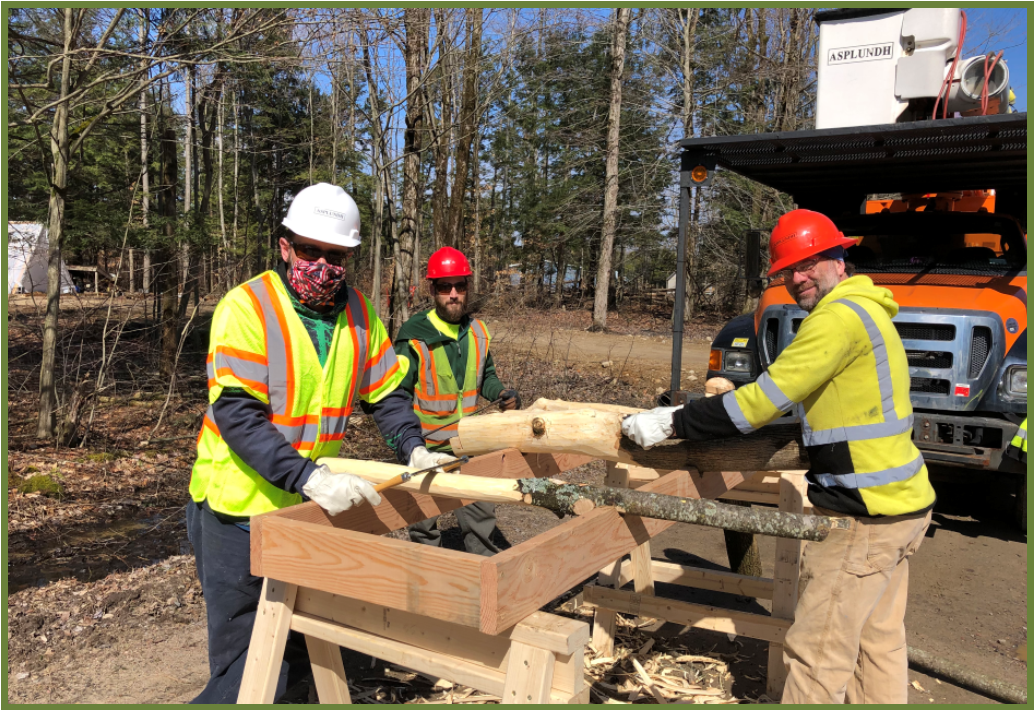Article contributed by, SLELO partner John Payton with National Grid
The Emerald Ash Borer Task Forces of both St. Lawrence County and Franklin County are highly active with engaging and educating their communities about emerald ash borer (EAB), particularly in delineating the range of known infestations across both counties. As this destructive pest continues to feed its way south from our northern borders, several groups are working in a coordinated effort to track its movement. Many of you may have seen the green funnel traps and purple prism traps that have been deployed to locate their infestations. The traps work decently but it is believed that the use of Sentinel Trees produces better results as it is thought that EAB is attracted to stressed trees much like a 5-year-old is to a fudgesicle.
Sentinel Trees are created simply by removing a 1ft. section of bark from the trunk of ash to stress it. The trees are selected and girdled in early Spring. Then, in either late fall or early spring the following year, the trees are taken down and the bark peeled off in search of larvae and its galleries. The process is labor-intensive and volunteers to do this work are specially trained to work methodically so that they don’t lose any evidence or data.
This last year, the Forestry Team for National Grid’s Northern Region, set and monitored 35 green funnel traps and created and harvested 12 sentinel trees that were strategically located along the Northern borders of St. Lawrence and Franklin County. Of the 47 opportunities to identify the presence of EAB, our team had 2 positive finds, both of which were from sentinel trees. One was just west of Heuvelton, NY on County Route 184 with the second in the Town of Lisbon, NY on County Route 10. The positive find in Lisbon is 2 miles further south of any previously known infestations, possibly illustrating a southern movement.
Although 2 finds out of 47 locations doesn’t seem like it should be a concern, keep in mind that our midwestern counterparts have been dealing with EAB for decades. What we’ve learned from them is that where there is one, there are many. The time was yesterday to begin dealing with this invasive as the best way to reduce financial costs associated with managing EAB infested ash is by implementing a management plan early.


